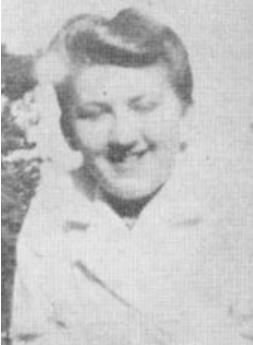
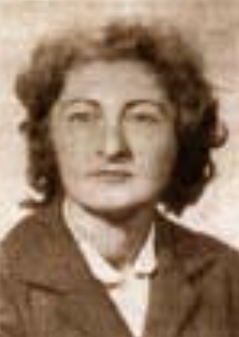

Janina Iwańska (left), and her sister Krystyna (middle). Courtesy of Elizabeth Wein.
Wanda Wójtasik-Pólawska (right). Courtesy of Elizabeth Wein.
How the Rabbits of Ravensbrück Were Able to Expose Their Story
“It is difficult to find any equivalent to the character, ingenuity and determination that these women showed in the worst of circumstances at such a young age.”
~ Barbara Oratowska



Janina Iwańska (left), and her sister Krystyna (middle). Courtesy of Elizabeth Wein.
Wanda Wójtasik-Pólawska (right). Courtesy of Elizabeth Wein.
The Ravenbrück camp was home to the “Rabbits,” 74 women who were subjected to the harsh illegal medical experiments conducted by Nazi doctors. The women's legs were cut into, smeared with bacteria, and injected with drugs. Among these women were Krystyna Czyż, Janina and Krystyna Iwańska, and Wanda Wójtasik-Pólawska. They knew that they wanted to get the news of these experiments out to the government, but they could not find a way, as their only source of exposure to the outside world was one monthly letter each to their families. That was when Czyż had the brilliant idea of using a thin, wooden stick dipped in urine to write on the margins of their letters.
“Because we didn’t have available any other liquids that could be used as invisible ink we used our own urine. It turned out to be more practical than milk, or onion or lemon juice.”
~ Krystyna Czyż
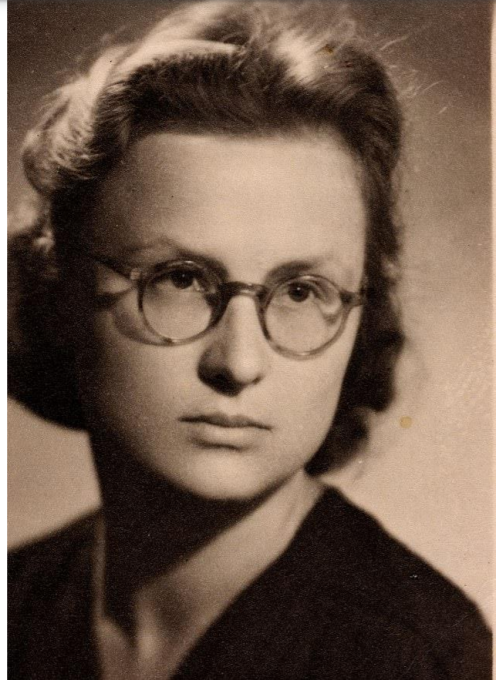
Krystyna Czyż. Courtesy of Haaretz.
When urine is exposed to paper, a chemical reaction occurs that causes the urine to become visible when heated up, which would hopefully get them through the censoring of the letters by the guards. If they were caught they risked death. Krystyna was unsure how to let her family know to look for her secret messages, but upon reading the letter her brother discovered something unusual. Using a mention of a book they used to read as kids, Krystyna was able to signal to her family that there was something hidden in her letter. Her brother and the rest of her family eventually heated the letter with a hot iron and the urine was revealed. These letters were then repeatedly sent from 1943 to 1944. Between the four girls and their families overall, about 27 letters were passed.
Janina Iwańska's letter to her father. Courtesy of Haaretz.
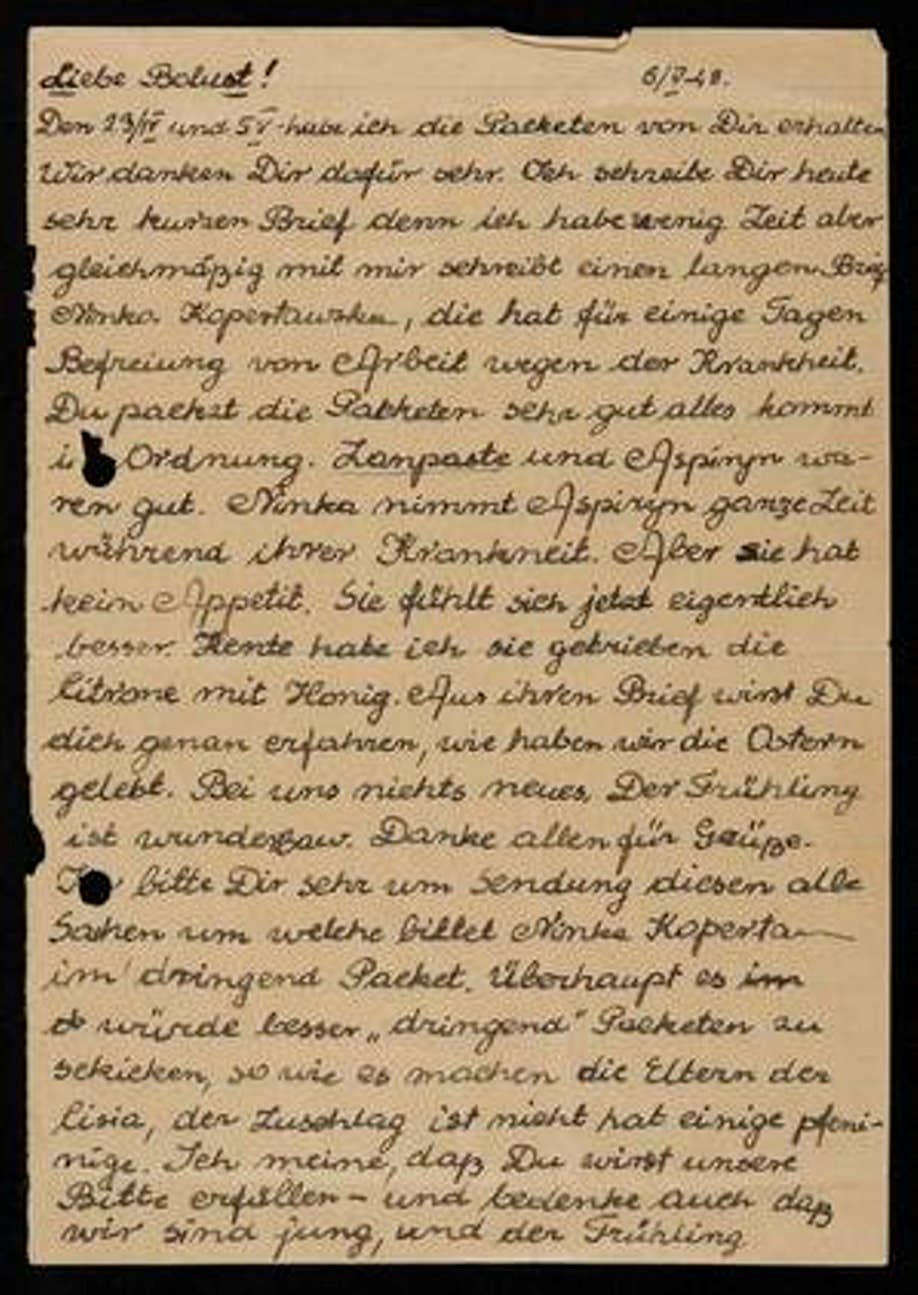
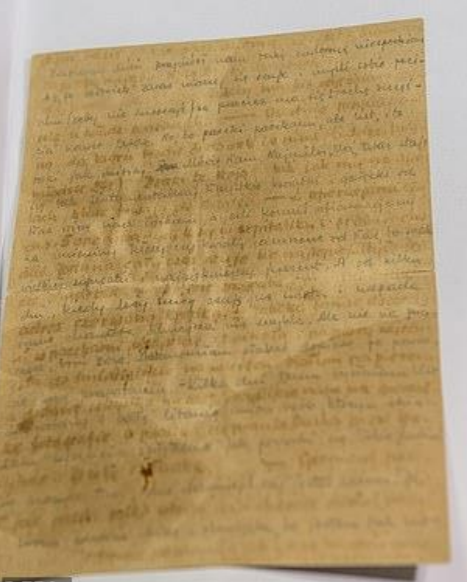
One of the urine letters. Displayed in Lublin Museum. Courtesy of Jhemmylrut Teng.
An envelope Janina Iwańska sent with a letter to her father. Courtesy of Haaretz.
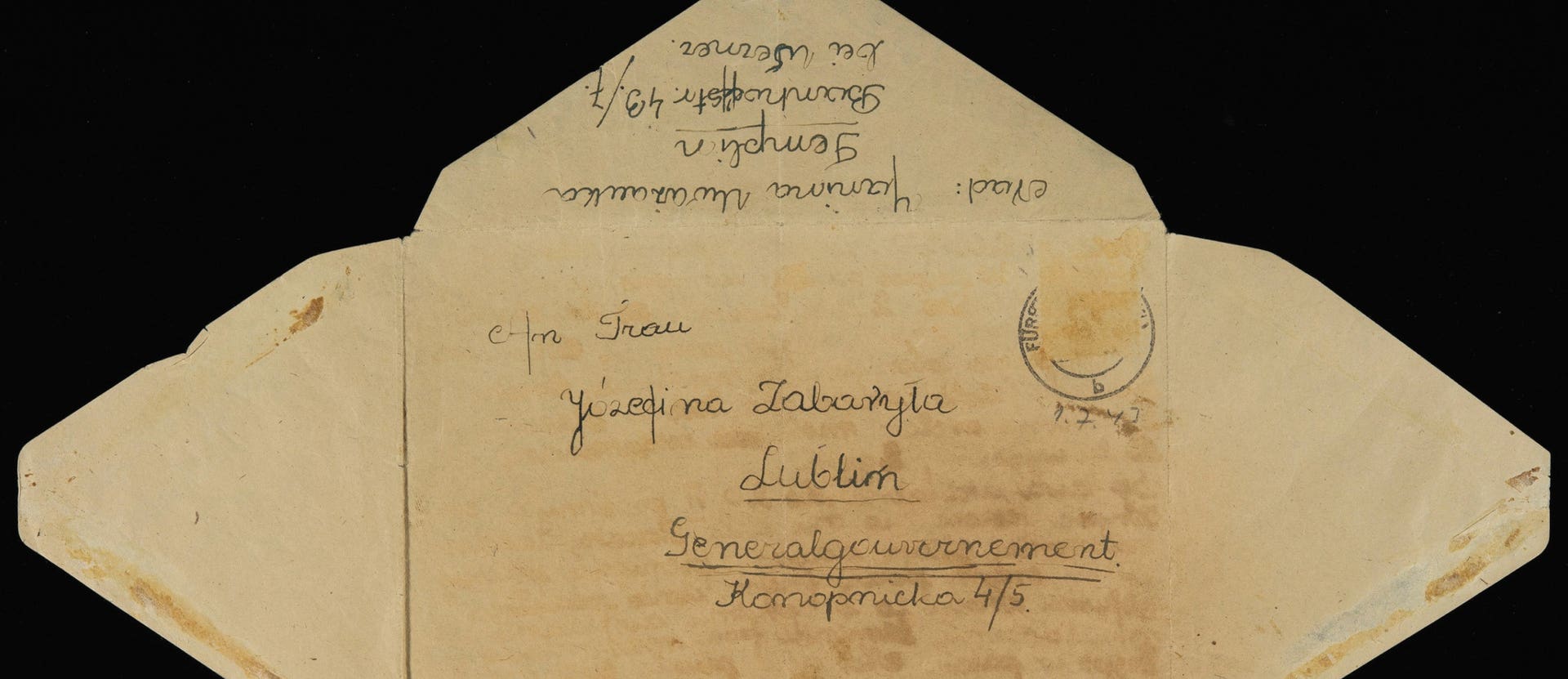
- The contents in the letter were able to reach both the International Red Cross, the Vatican, and the Polish government.
- When the camp was invaded the doctors and guards tried to dispose of any evidence that the experiments were being conducted by burning the documents and even trying to burn the women they experimented on.